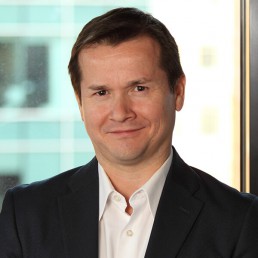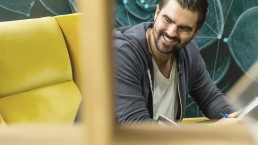Understanding the new workforce drivers
Curzon Managing Consultant Rodrigo Quezada Dighero shares his thoughts on the new workforce drivers.
Covid-19 is disrupting the ways in companies can engage and reward their workforce, traditionally a key factor to retain talent. Organisations should be using this opportunity to re-evaluate reward programmes and incentive models, paying close attention to employees’ changing values.
A time of disruption
Before the coronavirus pandemic, companies employed a wide range of benefits to engage and reward their employees. These spanned from pay increases and bonuses (monetary incentives), to office experiences such as in-house chefs, ping pong tables and lounges. Creating a great experience in the office was key to having a competitive edge with your rewards system.
Up until the pandemic, it could be said that key employee engagement drivers included the above listed rewards. However, the lockdown, enabling many to work from home, created a shift. A recent study showed that economic disruption and uncertainty brought high levels of anxiety for employees over their personal job security for over 64% of the global workforce. The result has been people committing long hours and working harder. For example, Rightmove Chief executive Peter Brooks-Johnson, said in March: “I’ve been encouraged by how seamlessly people have adapted to working from home and how productivity has increased over the past few months.” The property website has over 530 staff who moved to home-based working since March.
The new driver for employees shifted from an enjoyable working environment to keeping their jobs and their financial stability. For many, this was also balancing household responsibilities, taking care of family and working in cramped conditions. Suddenly work/life balance became a work/life blur. People adapted in order to maintain business continuity, but at a cost. Furthermore, a recent study showed that 62% of people trusted their employer to respond responsibly to COVID-19.
Now, as companies look to the horizon, people are also considering what the new normal will be for them in their working lives. Companies need to be aware of this when planning workforce engagement principles for the future. The focus is no longer on solving employees problems within the office, but rather it should include their household and life challenges.
It is important for companies to understand what the new drivers for employee engagement are, and adapt to better serve those new drivers. This will provide the right incentive for employees to remain engaged, creating a new environment to not just survive but thrive at work.
A great start
In May, Twitter communicated that staff would be able to work remotely forever if they desired. The communication from Jack Dorsey is an example of paying attention to what people were struggling with, a new reality. This was strengthened by an additional benefit – the provision of equipment to transform their home into an office.
The pandemic has increased the trend of employers playing an expanded role in their employees’ financial, physical and mental well-being. Support has included enhanced sick leave, financial assistance, adjusted hours of operation and child care provisions, special allowances for work-related need such as Ergonomic chairs, monitors and Wi-Fi. In the case of a workforce that cannot operate remotely, setting extra precautionary measures such as safe commuting alternatives and workplace adaptation have been the norm.
The current economic crisis has also pushed the bounds of how employers view the employee experience. Personal factors take on a new importance for organisations and employees alike. Employing a range of measures can be an effective way to promote physical health and improve the emotional well-being of employees.
But there’s still no clarity on the long term impact of COVID on the workforce.
The time to act is now
It is often difficult to create change or transformation within organisations. The present time offers an opportunity for organisations to change their people strategy and create more efficient and productive ways of working. Key considerations are:
Design from your people, not for them
Ask your workforce, and put yourself in their shoes, this is an extremely important time to listen to what your workforce cares about the most, and design your plans and drivers around it.
Communicate often with authenticity, compassion and confidence
One of the actions we saw in our clients that provided calm to high levels of anxiety on their workforce was continuous, honest and open communication.
Proactively seek feedback from employees and give them a voice, and let them lead. Ensure leaders share their own COVID-19 experiences.
Build trust with people through purpose
Uniting employees under a common purpose can be a strong motivating factor which is important during a challenging journey of change. Purpose-driven organisations are more flexible and better at navigating uncertainty.
Support households, not just employees
Workplaces may be starting to reopen, but uncertainty prevails for employees in other areas of life.
This highlights the importance of mental health support, employee assistance programmes and well-being initiatives to help people adapt during a difficult time.
Revisit policies, focusing on the most vulnerable groups, such as temporary workers, people with disabilities, single parents or those who lack adequate health benefits.
Remember, design the plan by asking your people; prepare your people to be in action, engage them into the new order, and finally, prepare to lead. Times like these require active leadership and consistent communication.
Working from home or living at work?
COVID-19 has brought unprecedented challenges. Many companies have risen to the occasion, acting swiftly to safeguard employees and migrate to a new way of working that most business-continuity plans hadn’t envisioned. Across industries, leaders will use the lessons from this time to re-imagine how work is done, and what role offices should play, in creative and bold ways.
This pandemic has also highlighted that work and personal life are closer than once thought. Merging work and home over the past months proved that there are new motivators that people are looking for from organisations. Understanding this new reality is crucial for companies to recruit and maintain talent, so adapting quickly is key.
The time to act is now. This is a unique opportunity to engage your people, address change and understand what the new reality demands from your business.
For that, you will need to listen and adapt. We have experience in change and we have put some approaches to help you in that process. We can help to design and implement a strategy that helps your organisation to manage change and drive workforce effectiveness, efficiency and engagement.
CONTACT US TO FIND OUT HOW WE CAN HELP
Future of Work insights
Curzon team walks 470 miles for Samaritans
Five members of the Curzon Consulting team undertook the Samarathon challenge in July.
About the Samarathon challenge
Five members of our team got involved in Samarathon, a virtual marathon organised by Samaritans that took place over July 2020. They joined The Lord Mayor’s Appeal team, to help raise funds to support charities that address some of London’s most pressing societal issues. Samaritans is one of the four amazing charities supported by The Lord Mayor’s Appeal.
A great result
With a fantastic effort from our team, and Curzon’s pledge to match funds raised pound for pound, we have been able to raise a total of £2,600.
£2600
raised
467
miles
Curzon Consulting Partner, Doug Badham, commented:
A terrific effort for a really worthwhile cause! Huge thanks to everyone who got behind us with sponsorship
Our fund raising pages remain open, so it’s not too late to donate if you wish to.
The team are Amy Palliser, Douglas Badham, Nigel Brannan, Silviu Paraoan & Stuart Kitching.
The importance of mental health
Samaritans answer a call for help every six seconds.
Their work to support people is vitally important, particularly during coronavirus, which is difficult for many. Read Samaritans’ guidance on how to take care of your mental health during the coronavirus pandemic.
CONTACT US TO FIND OUT HOW WE CAN HELP
The future of work
The Future of Work
COVID-19 has accelerated and amplified Future of Work trends impacting HR organisations and their enterprise partners.
As businesses work towards recovery and return to work, we explore what an effective people strategy and change management looks like.
Many organisations are now in a reactive mode and focused solely on business continuity. We can help organisations adapt their strategy and return to key fundamentals or create a new path forward.
Get strategy back on track – or a create new path. We will guide your strategy adaptation and a clear plan for execution.
Organisations are set to transform their workforce and workplace. It is increasingly important to be more agile while re-imagining the employee experience and emerging technologies to be successful in times of rapid change.
Organisations must align around a vision of future-ready talent and new modes of working. This means embracing the world of human, machine, physical, and digital to make near-term progress that delivers long-term opportunity.
Now is the time to develop and execute a human-centric plan for peak workforce efficiency and effectiveness.
As businesses begin their return to the workplace, there are a lot of questions to consider. Keeping people at the forefront of every decision is critical to a successful return. Our contact tracing solution, together with Nextconinent citizen Umlaut, helps organisations to keep their employees safe.
In collaboration with Point B
We have collaborated with our global consulting alliance (Nextcontinent) partners, Point B, to provide cross-border expertise on the future of work.
Some of their workforce experience insights:
- Guiding principles of remote working
- Inclusion in a virtual workspace
- Business continuity while working remotely
- The future of work is now webinar
Read our latest thinking below.
















